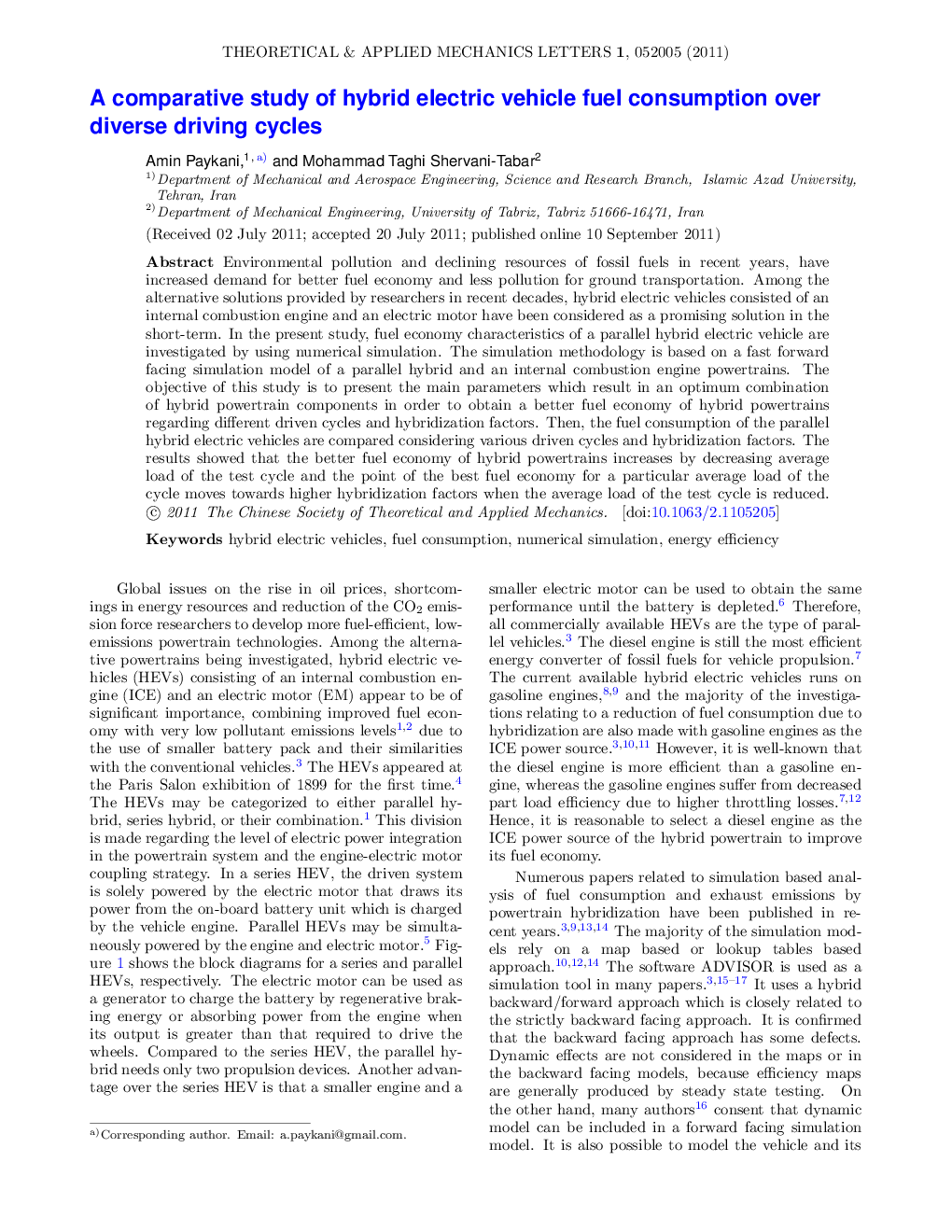| Article ID | Journal | Published Year | Pages | File Type |
|---|---|---|---|---|
| 808650 | Theoretical and Applied Mechanics Letters | 2011 | 49995 Pages |
Environmental pollution and declining resources of fossil fuels in recent years, have increased demand for better fuel economy and less pollution for ground transportation. Among the alternative solutions provided by researchers in recent decades, hybrid electric vehicles consisted of an internal combustion engine and an electric motor have been considered as a promising solution in the short-term. In the present study, fuel economy characteristics of a parallel hybrid electric vehicle are investigated by using numerical simulation. The simulation methodology is based on a fast forward facing simulation model of a parallel hybrid and an internal combustion engine powertrains. The objective of this study is to present the main parameters which result in an optimum combination of hybrid powertrain components in order to obtain a better fuel economy of hybrid powertrains regarding different driven cycles and hybridization factors. Then, the fuel consumption of the parallel hybrid electric vehicles are compared considering various driven cycles and hybridization factors. The results showed that the better fuel economy of hybrid powertrains increases by decreasing average load of the test cycle and the point of the best fuel economy for a particular average load of the cycle moves towards higher hybridization factors when the average load of the test cycle is reduced.
